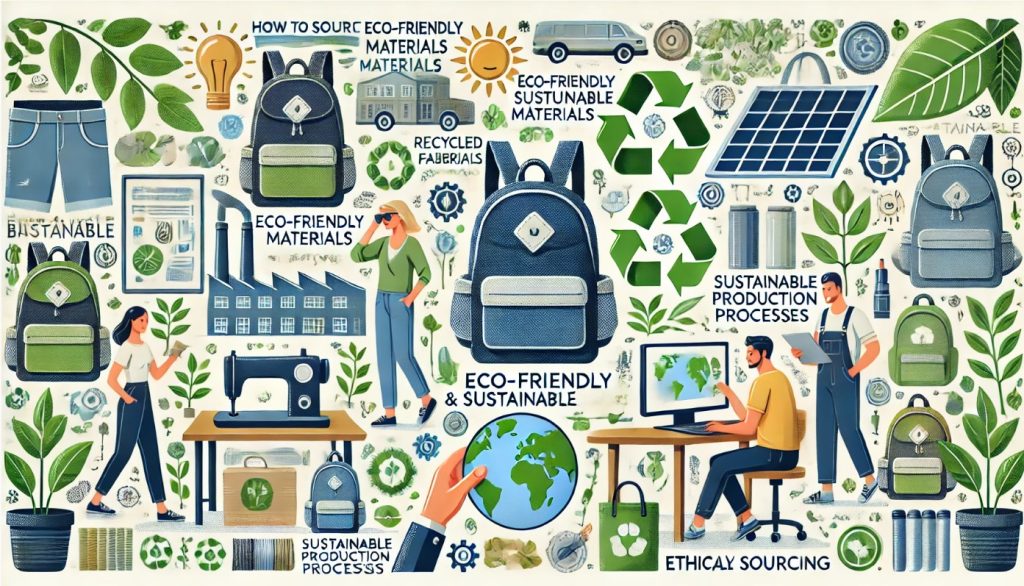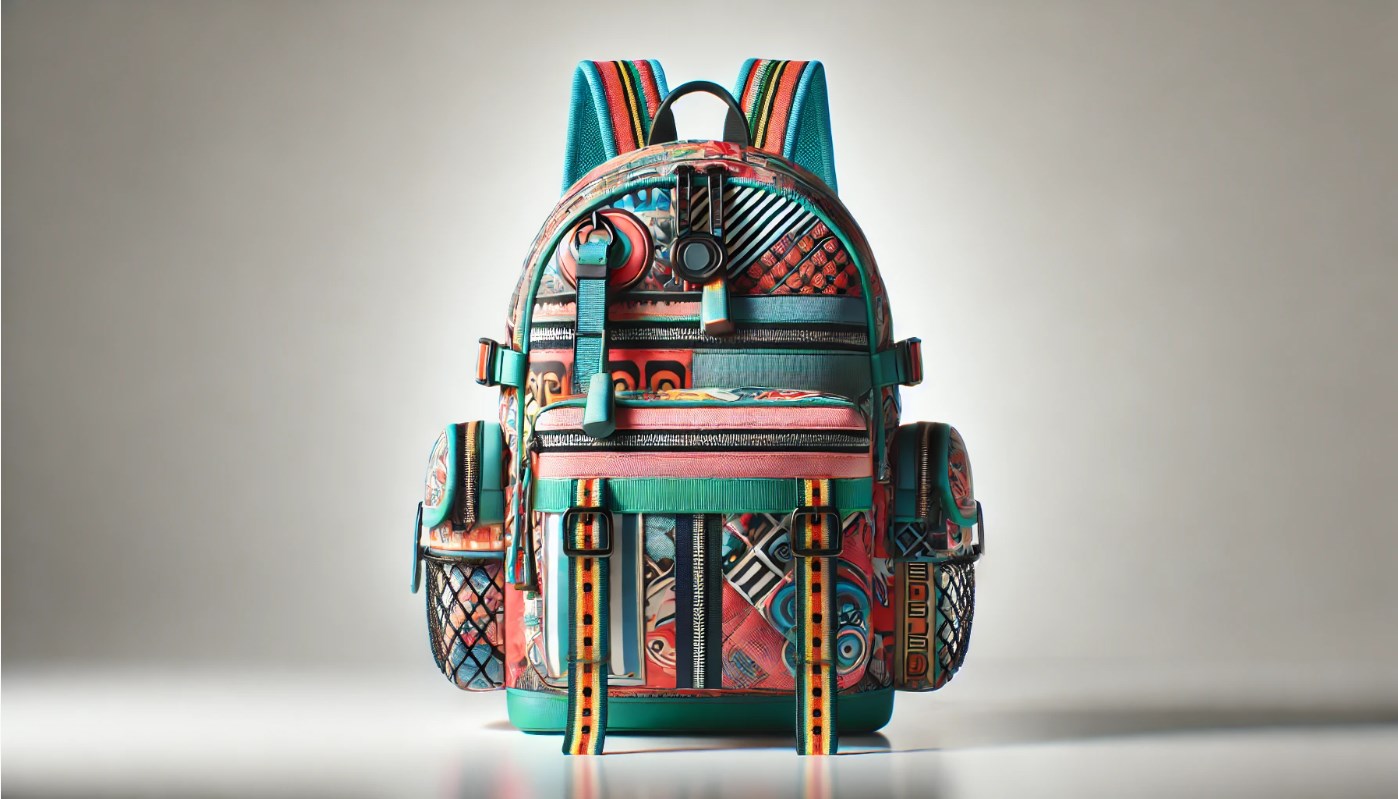The demand for eco-friendly and sustainable products has surged in recent years, and backpacks are no exception. With increasing awareness about environmental issues, consumers are seeking out brands that prioritize sustainability and ethical practices in the production of their goods.
Demand for Sustainable Backpacks
The Shift Toward Conscious Consumerism
Sustainability is no longer just a trend but a necessity, driven by the growing concern over climate change, plastic pollution, and the ethical treatment of workers. As consumers become more environmentally conscious, they are increasingly demanding products that are made with sustainable materials and ethical production processes. This shift in consumer behavior is particularly strong among younger generations, who prioritize eco-friendly products when making purchasing decisions.
Backpacks, which are an essential part of daily life for many people, are no exception to this trend. Eco-conscious consumers want backpacks that not only serve their practical needs but also align with their values of environmental responsibility, fair labor practices, and social sustainability. By sourcing sustainable backpacks, brands can not only meet the needs of this growing market but also build trust and loyalty with consumers.
Defining Sustainability in Backpack Manufacturing
Sustainability in backpack manufacturing encompasses various factors, including the use of eco-friendly materials, ethical labor practices, reduced waste production, and efforts to minimize the carbon footprint. A truly sustainable backpack manufacturer incorporates these elements into every step of the production process—from design to sourcing to shipping.
An eco-friendly backpack is typically made from recycled, biodegradable, or organic materials, produced under fair labor conditions, and packaged in environmentally friendly packaging. It also aims to reduce its impact on natural resources, such as water and energy, throughout the manufacturing process.
Selecting Eco-Friendly Materials for Backpacks
Recycled Fabrics and Textiles
One of the most popular materials used in sustainable backpack manufacturing is recycled fabric. These fabrics are made from post-consumer waste, such as recycled plastic bottles, discarded garments, or fabric scraps. One of the most widely used recycled textiles is Recycled PET (rPET), which is made from recycled plastic bottles. This fabric is durable, lightweight, and water-resistant, making it an ideal choice for backpacks. Using recycled fabrics not only helps reduce plastic waste but also decreases the need for virgin raw materials, reducing the environmental impact of production.
In addition to rPET, other recycled materials such as nylon and polyester are also increasingly being used. Some brands are even experimenting with innovative fabrics made from recycled ocean plastic, helping to clean up marine environments while producing high-quality textiles.
Organic and Natural Fibers
For eco-friendly backpacks, manufacturers often turn to organic and natural fibers, which are grown without synthetic pesticides, fertilizers, or genetically modified organisms (GMOs). Organic cotton is one of the most commonly used materials, as it is biodegradable and free of harmful chemicals. Hemp is another sustainable material that is gaining popularity for backpacks due to its low environmental impact during cultivation and its durability.
Other natural materials include cork fabric, which is harvested from the bark of cork oak trees without harming the tree itself, and mushroom leather, a biodegradable alternative to traditional leather made from the root structure of mushrooms. These materials offer a natural, sustainable option for backpack manufacturers who want to avoid the environmental damage caused by conventional leather production, which often involves toxic chemicals and animal cruelty.
Biodegradable Materials
Biodegradable materials are increasingly becoming an essential part of sustainable backpack manufacturing. Fabrics like Tencel, made from sustainably sourced wood pulp, and biodegradable plastics derived from plant-based sources are helping to reduce the environmental impact of waste. These materials break down more easily in the environment, reducing landfill accumulation and pollution.
While biodegradable fabrics are still somewhat niche in the backpack industry, their use is expected to grow as more brands explore alternative materials that are kinder to the planet. These biodegradable options also provide consumers with an opportunity to make more eco-conscious choices that do not contribute to the global plastic crisis.
Upcycled and Repurposed Materials
Another trend in sustainable backpack sourcing is the use of upcycled materials. These materials come from previously discarded items—such as old tents, sails, or car upholstery—and are repurposed to create durable, functional backpacks. Upcycling not only reduces waste but also gives new life to items that would otherwise end up in landfills.
Some brands have embraced upcycling to create unique, one-of-a-kind backpacks. This trend supports the idea of “reuse” and offers an opportunity for brands to tell a compelling story about sustainability and creativity. It’s also an effective way to incorporate a high level of craftsmanship and originality into eco-friendly backpack designs.
Ethical and Responsible Manufacturing Practices
Fair Labor and Working Conditions
Sustainability in backpack manufacturing goes beyond materials—it also includes ensuring that the people involved in production are treated fairly and ethically. Ethical labor practices are essential for sourcing backpacks responsibly. Brands should ensure that their manufacturing partners follow fair labor practices, including providing safe working conditions, paying fair wages, and adhering to local labor laws.
Many backpack brands are opting for factories that are certified by ethical organizations, such as Fair Trade or B Corp, to ensure that their production processes meet high standards for social responsibility. These certifications help verify that workers’ rights are protected, and manufacturers are operating in an environmentally and socially responsible manner.
Transparency and Supply Chain Traceability
Consumers are increasingly demanding transparency from brands about where and how their products are made. To meet this demand, brands must focus on providing visibility into their supply chain, including the sourcing of materials, the manufacturing processes, and the working conditions in their factories.
Some brands have taken transparency to the next level by offering a full breakdown of their supply chain on their websites, sharing information about their materials, production partners, and sustainability initiatives. This transparency builds trust with consumers and allows them to make informed purchasing decisions. By partnering with manufacturers who share these values, brands can create a more sustainable and ethical supply chain.
Reducing Waste in the Production Process
One of the biggest environmental impacts of manufacturing is the generation of waste. Sustainable backpack manufacturers are working to minimize waste throughout the production process by employing lean manufacturing principles, which aim to reduce excess materials, improve efficiency, and minimize scrap. Additionally, manufacturers are focusing on reducing water and energy consumption, which further reduces the environmental impact of production.
Some backpack brands are also introducing “zero waste” policies in which every scrap of fabric is repurposed or reused, and no material is sent to landfills. This approach helps manufacturers optimize their resource use and cut down on waste, aligning with the broader goals of sustainability.
Sustainable Packaging and Shipping Practices
Eco-Friendly Packaging Solutions
Packaging plays a crucial role in a backpack’s environmental footprint, and many sustainable backpack brands are shifting to environmentally friendly packaging options. This includes using recycled cardboard, biodegradable materials, and reducing the amount of plastic used in packaging. Some brands are also opting for minimalistic packaging, ensuring that the packaging material used is functional yet simple.
By choosing eco-friendly packaging, brands can reduce their contribution to plastic pollution and ensure that their sustainability efforts extend beyond the product itself. Additionally, some companies are using reusable packaging or offering customers the option to return packaging for recycling.
Carbon-Neutral Shipping and Logistics
The environmental impact of shipping is another important consideration when sourcing sustainable backpacks. Shipping, especially air freight, can contribute significantly to a brand’s carbon footprint. To address this, many sustainable brands are working to offset their carbon emissions by investing in carbon offset programs or opting for greener shipping methods, such as ocean freight or ground transportation.
Some brands are also working with third-party logistics providers who prioritize sustainability in their shipping practices, using electric vehicles or more fuel-efficient methods of transport to reduce emissions. By ensuring that their supply chain is as sustainable as possible, brands can offer a truly eco-conscious product.
Sourcing Sustainable Backpacks: Finding the Right Manufacturers
Partnering with Sustainable Manufacturers
When sourcing eco-friendly backpacks, finding the right manufacturer is key. Manufacturers should not only have experience in producing high-quality backpacks but also be committed to sustainability. Brands should seek out manufacturers who share their values and are willing to collaborate on creating eco-friendly products.
A good way to find these manufacturers is by attending sustainability trade shows, reaching out to eco-certification organizations, and leveraging industry networks to identify trustworthy partners. It’s important to ask about their sustainability practices, materials, and supply chain transparency to ensure that the manufacturer is aligned with your sustainability goals.
Third-Party Certifications
To further ensure that a manufacturer is committed to sustainability, look for third-party certifications that verify eco-friendly practices. Certifications like Global Organic Textile Standard (GOTS), Fair Trade, and OEKO-TEX Standard 100 can provide assurance that the manufacturer adheres to high environmental and social standards. These certifications guarantee that the materials used are sustainable, the production process is ethical, and the factory meets strict labor standards.
Local vs. Global Sourcing
Another factor to consider when sourcing sustainable backpacks is whether to work with local or global manufacturers. Local manufacturers can reduce the carbon footprint associated with long-distance shipping, but they may have limited resources or materials available. On the other hand, global manufacturers might offer a broader selection of sustainable materials but come with the challenge of longer shipping times and higher emissions. Each brand must weigh the pros and cons of local versus global sourcing based on their specific sustainability goals.
Innovating for Sustainability in Backpack Design
Designing for Longevity
The longevity of a backpack is one of the most important factors in determining its sustainability. Well-designed backpacks made from durable, high-quality materials last longer, reducing the need for frequent replacements and minimizing waste. When sourcing backpacks, prioritize manufacturers that focus on producing long-lasting products that can withstand wear and tear.
Additionally, some brands are incorporating design features that make backpacks easier to repair, such as removable straps or modular components. These design innovations not only extend the lifespan of the backpack but also reduce the environmental impact associated with replacing a damaged product.
Multifunctional and Modular Designs
Backpacks designed for multiple purposes help to reduce the number of bags a consumer needs to purchase, contributing to sustainability. Manufacturers are increasingly creating backpacks with modular features, such as removable compartments, adjustable straps, and external gear loops, allowing users to customize the backpack to fit their specific needs. These multifunctional designs appeal to consumers who want versatile, long-lasting products that serve a variety of functions.
Designing for Recyclability
As part of the circular economy, some manufacturers are designing backpacks that are fully recyclable. This means using materials that can be easily separated and processed at the end of the product’s life, reducing waste and encouraging consumers to recycle their old backpacks. Brands that incorporate recyclable materials, like recycled polyester, and design their backpacks with recyclability in mind help ensure that their products don’t end up in landfills.
Collaborating with Sustainability-Focused Brands
Co-Creation and Partnerships
Brands looking to strengthen their sustainability efforts may consider collaborating with other sustainability-focused companies, designers, or environmental organizations. Co-creation partnerships allow brands to combine resources, share expertise, and innovate in new ways. By working with partners who have a strong commitment to sustainability, brands can accelerate their sustainability efforts, improve product designs, and share knowledge about ethical manufacturing practices.
Community Engagement and Storytelling
Engaging with customers about sustainability efforts can help build a stronger brand connection and foster loyalty. Many eco-conscious consumers are motivated by the story behind a product, from the materials used to the fair treatment of workers involved in its production. Brands should embrace storytelling as part of their marketing, sharing the journey of sourcing eco-friendly backpacks and the positive impact of their sustainability initiatives.







